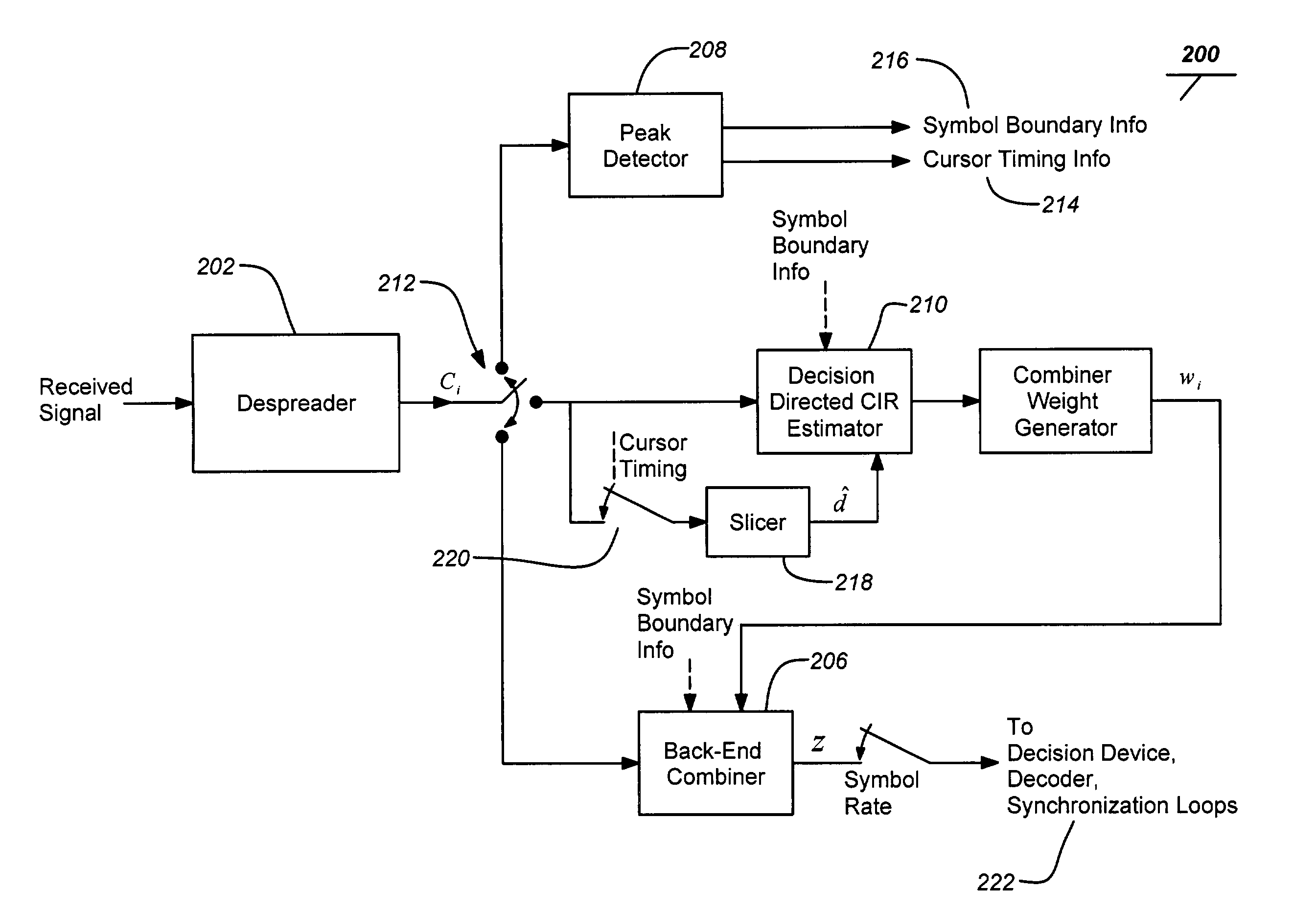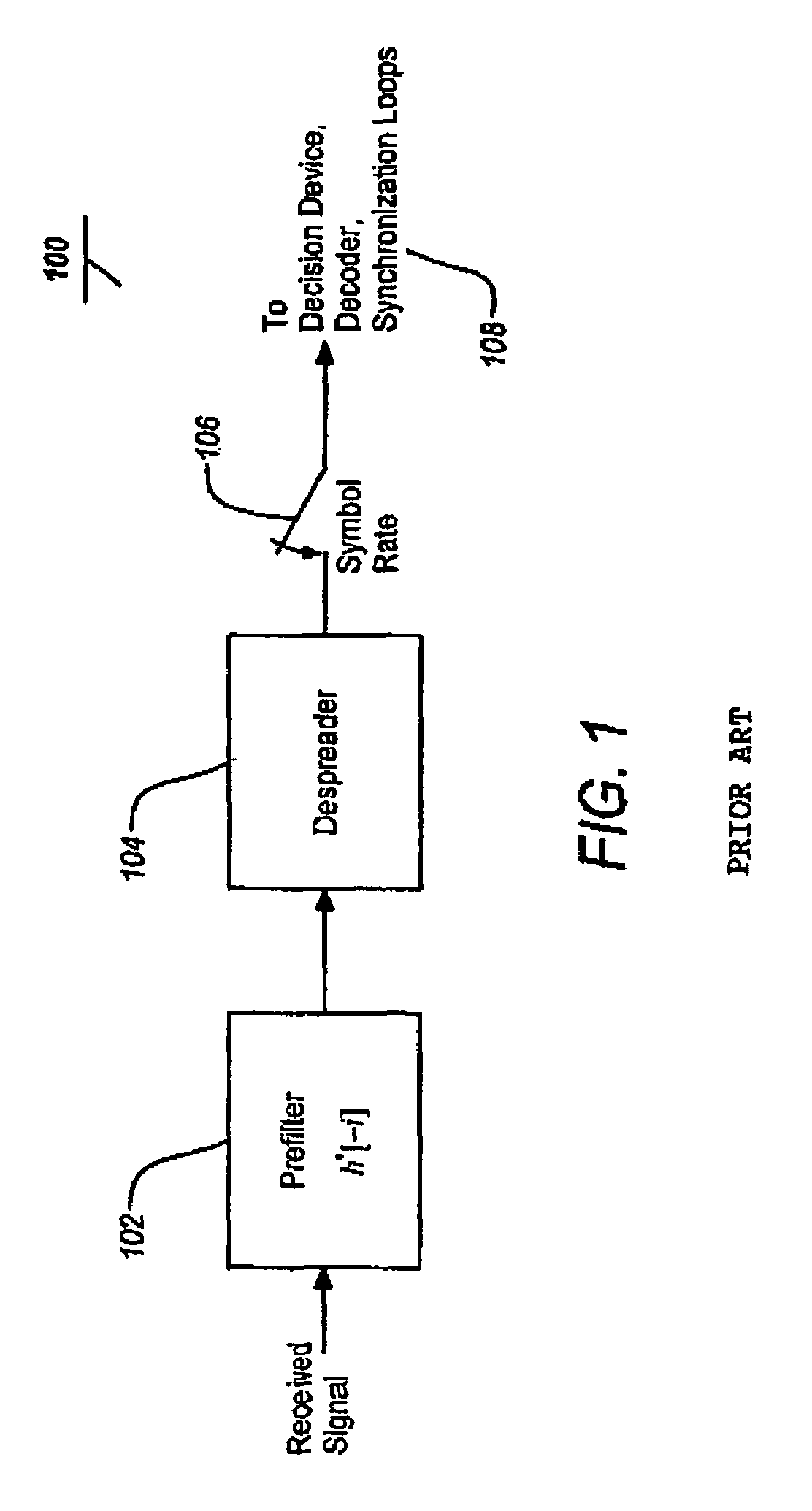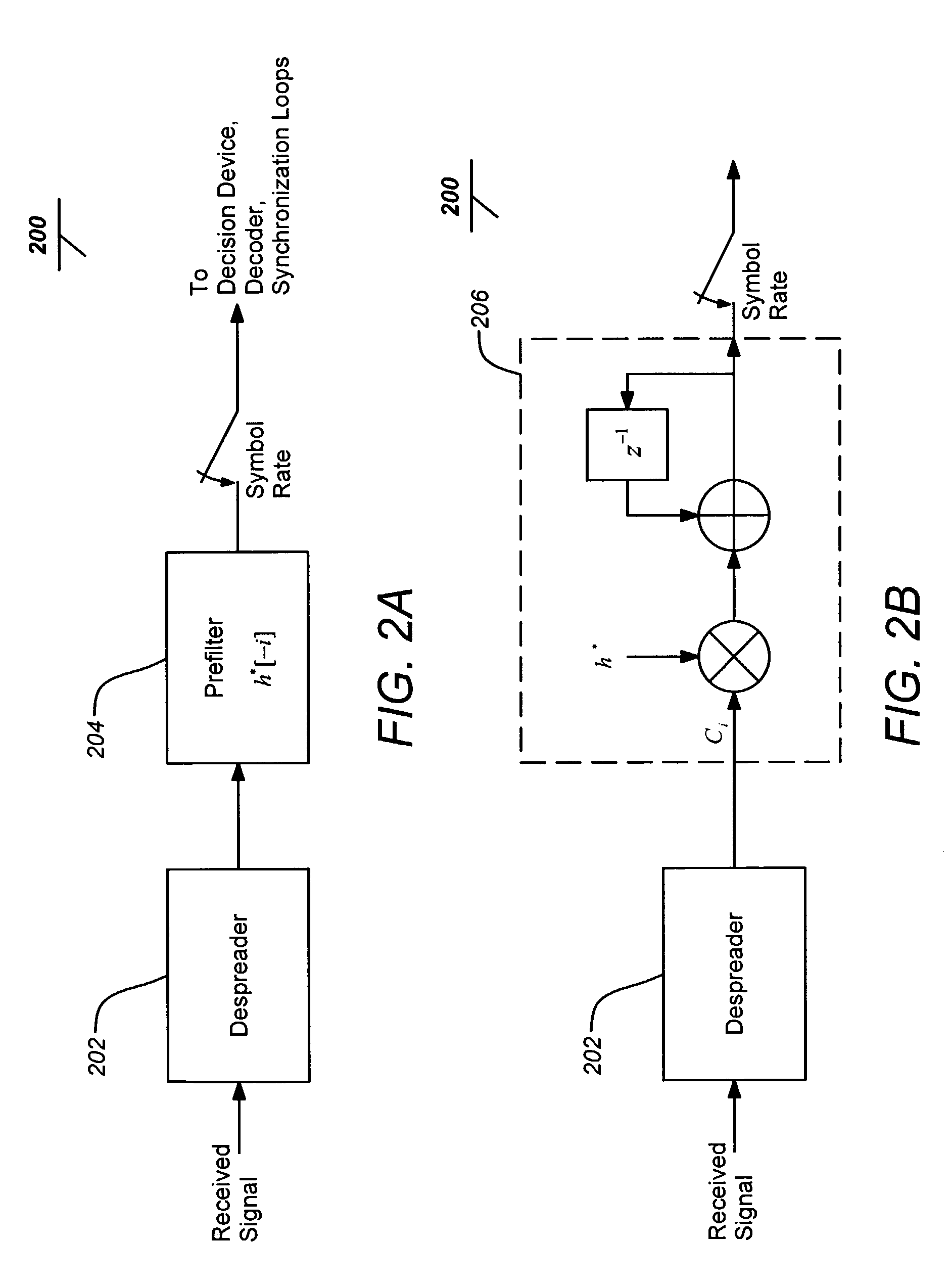Efficient back-end channel matched filter (CMF)
a back-end channel and filter technology, applied in error prevention, amplitude demodulation, digital transmission, etc., can solve the problems of severe performance impairment, signal-to-noise ratio degradation, etc., and achieve optimal performance and efficient implementation of post- despreading channel matched filters
- Summary
- Abstract
- Description
- Claims
- Application Information
AI Technical Summary
Benefits of technology
Problems solved by technology
Method used
Image
Examples
Embodiment Construction
[0025]In the following description of the preferred embodiment, reference is made to the accompanying drawings which form a part hereof, and in which is shown by way of illustration specific embodiments in which the invention may be practiced. It is to be understood that other embodiments may be utilized and structural changes may be made without departing from the scope of the present invention.
1. Back-End Channel Matched Filter Overview
[0026]The conventional, front-end CMF of FIG. 1 represents a concatenation of two linear time-invariant operations, since the despreader can be consider as a finite-impulse response (FIR) filter with a response equal to the time-reversal version of the spreading sequence. Hence, the connection can be interchanged without altering the overall response of the concatenated system.
[0027]FIGS. 2A and 2B are block diagrams of a typical back-end channel matched filter implementation of the present invention. The back-end CMF architecture 200 with the filte...
PUM
 Login to View More
Login to View More Abstract
Description
Claims
Application Information
 Login to View More
Login to View More - R&D
- Intellectual Property
- Life Sciences
- Materials
- Tech Scout
- Unparalleled Data Quality
- Higher Quality Content
- 60% Fewer Hallucinations
Browse by: Latest US Patents, China's latest patents, Technical Efficacy Thesaurus, Application Domain, Technology Topic, Popular Technical Reports.
© 2025 PatSnap. All rights reserved.Legal|Privacy policy|Modern Slavery Act Transparency Statement|Sitemap|About US| Contact US: help@patsnap.com



